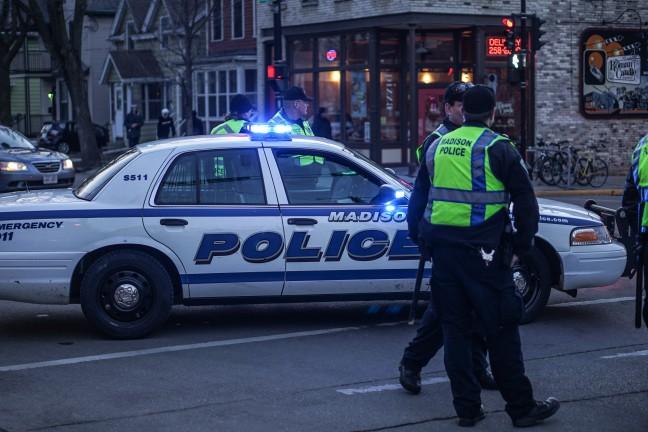Madison Police Chief Shon Barnes addressed a new report containing over 60 recommendations to change how the department handles protests at a press conference Tuesday.
The Quattrone Center of Fair Administration report recently released an independent review of the Madison Police Department’s actions last summer at a multitude of protests. The Madison Police Department requested the report in order to improve their response to protests.
“The George Floyd incident … shocked the conscience of police officers who just want to come to work and do the best they can for their community,” Barnes said at the press conference. “And being prepared for this is tough.”
The report examined hours of closed caption video, social media reports and police radio calls. Downtown stores were vandalized, Capitol statues were torn down and fires were set.
The report identified 14 “critical incidents” that were “particularly disturbing and undesirable.” Following an analysis of these critical incidents, the group made 69 recommendations for the police department.
During the press conference, Barnes said he intends to implement all of the recommendations and present measures of accountability on those recommendations to the public.
Quattrone Center Director John Hollway said at the press conference the report was less about “who should be blamed” but rather “forward-looking accountability” to prevent outcomes like last summer in the future.
“[The report] was a rare opportunity for the Quattrone Center and a major police department to work together to learn from these complex protests,” Hollway said. “The Madison Police Department volunteered for this. They were incredibly transparent.”
Past communication between police and protesters was ineffective, the report found based off facilitated conversations with community stakeholders. The report said MPD should obtain voice amplification equipment for officers who wear gas masks, allowing for clearer communication between officers and community members.
Another section of the report recommends a “less is more” approach, suggesting a reduction of police presence at protests. The report also recommends only using tear gas and group dispersion methods when necessary to prevent injury.
“We did not find any instances of explicit racism,” Hollway said. “We did not find moments where we felt the department was acting wantonly.”
The report concluded all police officers should undergo crowd control training and work with Madison’s Police Civilian Oversight Board. Doing so would promote better relationships with the Madison community by increasing both transparency and police accountability, according to the report.
Barnes said the department was prepared to handle the protests, but not the combination of factors such as the pandemic, “how people were feeling,” the anxiety and the uncertainty of the moment.
“It was a situation that rapidly escalated,” Barnes said. “Couple that with the fact that we saw somebody get murdered on a screen by a police officer. The trust and legitimacy … was truly tested by every police department.”
But looking forward, Barnes said the department will continuously try to answer the question: “How can we improve?”


